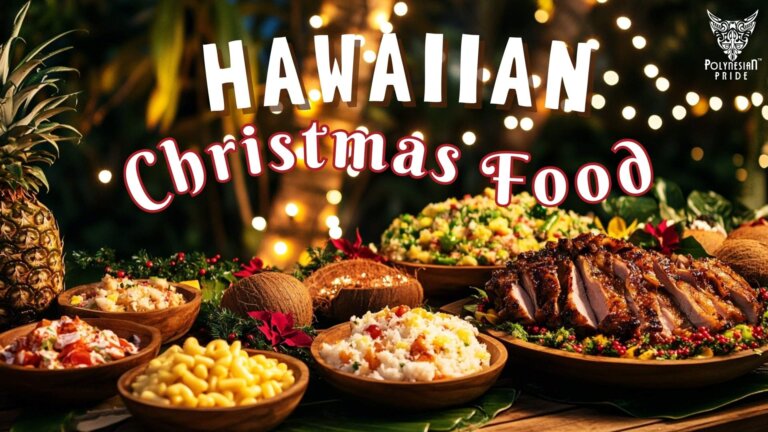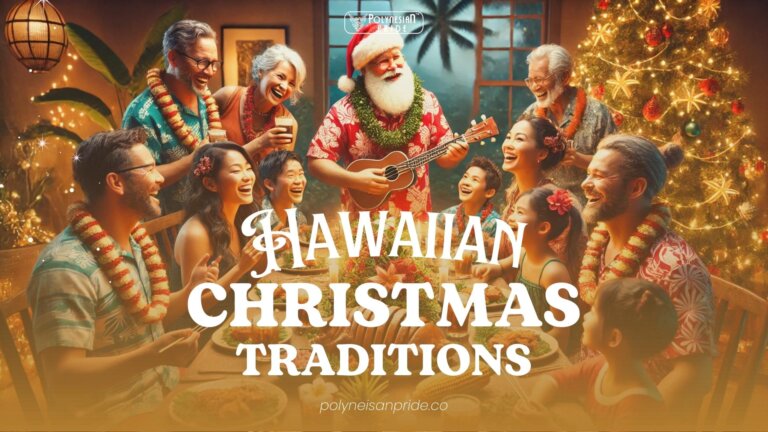Papua New Guinea Indigenous People: Unveiling A Rich Culture

INTRODUCTION
Papua New Guinea is a land of unparalleled cultural richness and diversity, home to some of the world’s most intriguing indigenous people. This tropical paradise, nestled in the southwestern Pacific Ocean, is not only known for its breathtaking landscapes but also its extraordinary cultural mosaic. Each indigenous community in Papua New Guinea contributes to the country’s rich heritage with unique traditions, languages, and ways of life.
This article delves deep into the vibrant world of Papua New Guinea indigenous people, exploring their historical roots, cultural practices, and the modern challenges they face in preserving their identity amidst a rapidly changing world.

Historical Background

Early Inhabitants
Papua New Guinea Indigenous People have a history that stretches back thousands of years. Archaeological evidence suggests that the first humans arrived in Papua New Guinea is ‘The Papuans‘ around 50,000 years ago. These early inhabitants were adept at adapting to the island’s diverse environments, from coastal regions to mountainous highlands. Over millennia, they developed distinct cultures, languages, and social structures. These ancient societies were primarily hunter-gatherers who gradually evolved into agricultural communities, laying the foundations for today’s complex and diverse cultures.
Colonial Era
The arrival of European explorers and colonizers in the 19th century marked a significant turning point for Papua New Guinea Indigenous people. Spanish and Portuguese explorers made the first European contact in the 16th century. Still, in the 19th century, more extensive interactions began with the arrival of missionaries, traders, and colonial administrators. The introduction of Christianity, new economic systems, and Western governance structures disrupted traditional ways of life. Colonial rule, initially by Germany in the north, Britain in the south, and later by Australia, brought profound changes. The imposition of foreign control often led to the displacement of communities, loss of traditional lands, and significant cultural upheaval, impacts that continue to influence Papua New Guinea’s societal dynamics today.
Diversity of Indigenous Groups
Number of Ethnic Groups
Besides the predominant Papuans and Austronesians, Papua New Guinea is also home to Negrito, Micronesian, and Polynesian communities. The Negrito people, originally from the Philippine islands, maintain their unique cultural heritage. Micronesians, known for their navigational skills, originate from the Western Pacific’s Caroline and Marshall Islands. Polynesians, hailing from islands like Samoa and Tonga, contribute vibrant cultural expressions in art, dance, and music. These groups enrich Papua New Guinea’s cultural diversity with their distinct traditions and histories.
Major Tribes Of Papua New Guinea Indigenous People
Some of the major tribes include the Huli Tribe, known for their elaborate wigs and face painting, who reside in the Highlands; the Trobriand Islanders in Milne Bay Province, famed for their intricate yam exchanges and kula ring trade; and the Asaro Mudmen of the Eastern Highlands, who are renowned for their dramatic mud masks.
Each tribe is closely associated with specific regions and maintains a unique cultural identity tied to their traditional lands. These regions are not just geographical locations but are imbued with spiritual and historical significance, forming the backbone of artistic practices and Papua New Guinea culture.

Languages Of Papua New Guinea Indigenous People
Linguistic Diversity
Papua New Guinea is renowned for its linguistic diversity, with over 800 languages spoken nationwide. Therefore, Papua New Guinea is the most linguistically diverse place on Earth. These languages belong to several different language families, showcasing the rich tapestry of human communication that has developed in relative isolation over millennia. The complexity and variety of languages are a testament to the adaptability and ingenuity of Papua New Guinea indigenous people. Each language encapsulates a unique worldview and cultural heritage, making preserving these languages crucial for maintaining the nation’s cultural diversity.
Role of Tok Pisin
Papua New Guinea Indigenous People speak many languages, but different ethnic groups communicate using Tok Pisin as a lingua franca. It is one of Papua New Guinea’s three official languages, alongside English and Hiri Motu, facilitating broader interaction and unity. Tok Pisin evolved during the colonial period and has become a symbol of national identity and cohesion. People widely speak and understand it, which helps bridge the communication gap in a country with such immense linguistic diversity. The use of Tok Pisin in media, education, and governance underscores its importance in maintaining national unity while respecting linguistic diversity.

Papua New Guinea Indigenous People’s Traditional Lifestyles
Subsistence Farming and Hunting
Papua New Guinea indigenous people’s traditional lifestyles primarily rely on subsistence farming and hunting. These practices have sustained communities for thousands of years. Indigenous people grow crops like sweet potatoes, taro, yams, and bananas and engage in hunting and fishing to supplement their diets. These agricultural practices are well adapted to the local environments and often use traditional methods passed down through generations. Hunting and gathering provide food and reinforce social bonds and cultural traditions. These practices are deeply embedded in their cultural and social structures, reflecting a deep connection to the land and natural resources.
Village Life and Social Structure
Village life is central to Indigenous life, with extended families often living together in close-knit communities. Social structures are typically organized around clans or tribes, each with leadership and social norms. These structures provide a framework for governance, conflict resolution, and social organization. Elders play a crucial role in maintaining traditions and guiding younger generations. The sense of community and mutual support is strong, with communal activities and collective decision-making being integral parts of daily life. This close-knit social fabric helps preserve cultural practices and ensures the transmission of knowledge and traditions across generations.

Papua New Guinea Indigenous People Cultural
Traditional Clothing and Body Art
Traditional clothing varies widely among tribes of Papua New Guinea native people. They often make it from natural materials like bark cloth, woven fibers, and animal skins.
These garments typically feature intricate patterns and decorations with cultural significance. Body art, including tattoos and body painting, is a significant cultural expression during ceremonies and rituals. These aesthetic practices convey social status, tribal affiliation, and individual achievements. The Body art adornment and traditional attire are often showcased during festivals and public events, visually representing cultural identity and heritage.
Festivals and Rituals
Festivals and rituals play a crucial role in the cultural life of Papua New Guinea indigenous people. These events allow communities to unite, celebrate their heritage, and pass on traditions. For example, the Mount Hagen Cultural Show is one of the most famous cultural festivals, bringing together various tribes to celebrate their heritage through music, dance, and traditional dress. Rituals often mark important life events such as births, marriages, deaths, agricultural cycles, and spiritual observances. These practices reinforce social bonds, cultural continuity, and a sense of belonging within the community.

Papua New Guinea Indigenous People’s Art And Craftsmanship
Traditional Crafts
Art and craftsmanship are integral to Papua New Guinea indigenous people’s culture, with a rich tradition of creating functional and decorative items. Traditional crafts include intricate wood carvings, pottery, weaving, and basketry. These items are often made using locally sourced materials and traditional techniques passed down through generations. The craftsmanship involved in creating these objects is highly valued and usually reflects the community’s cultural and spiritual beliefs. Traditional crafts are functional and serve as expressions of cultural identity and heritage, with specific designs and motifs unique to each tribe.
Symbolism in Art
Artworks often feature symbolic motifs that convey cultural stories, spiritual beliefs, and social values. These symbols can be found in carvings, paintings, and other forms of artistic expression, offering insight into the worldview of Papua New Guinea’s indigenous people. For example, specific patterns might represent ancestral spirits, natural elements, or historical events. Using color, form, and symbolism in art communicates important cultural messages and preserves historical narratives. Artistic expression is vital to cultural heritage, providing a medium for storytelling and transmitting knowledge across generations.

Spiritual Beliefs Of Papua New Guinea Indigenous People
Animism and Spirituality
Many indigenous communities in Papua New Guinea practice animism. This belief system sees the natural world as inhabited by spirits. These spiritual beliefs are deeply intertwined with their daily lives, influencing everything from agriculture to social relations. People believe spirits reside in natural elements such as trees, rivers, and mountains, and maintaining harmony with these spirits is essential for community well-being.
Indigenous communities often conduct rituals and ceremonies to honor these spirits and seek their guidance and protection. These practices reflect a profound connection to the natural environment and a holistic worldview encompassing both the physical and spiritual realms.
Role of Shamans
Shamans, or traditional healers, play a vital role in The Papua New Guinea indigenous community’s spiritual and health practices. Many believe they can communicate with spirits. They are often called upon to heal illnesses, conduct rituals, and offer guidance. Shamans hold a revered position within their communities, acting as intermediaries between the physical and spiritual worlds. Their knowledge of medicinal plants, healing techniques, and spiritual practices is passed down through generations, preserving ancient wisdom and cultural traditions. Shamans’ role underscores spirituality’s importance in maintaining health and harmony within the community.

Indigenous Music and Dance
Traditional Instruments and Songs

Music and dance are central to the cultural life of Papua New Guinea’s indigenous people. Traditional instruments like the Kundu drum, gamut, and bamboo flutes create rhythmic music accompanying dances and ceremonies. Songs often tell stories of ancestors, historical events, and cultural beliefs, serving as a medium for preserving oral traditions.
Traditional music’s rhythms and melodies are deeply ingrained in cultural practices and are integral to community gatherings, rituals, and celebrations.
Dance as a Cultural Expression
Dance is not just entertainment but a powerful form of cultural expression. Through dance, indigenous people tell stories, celebrate important events, and maintain their cultural heritage. Traditional dances often involve elaborate costumes, body paint, and masks, each with symbolic significance.
Traditional dances are performed during ceremonies, festivals, and social gatherings, reinforcing social bonds and cultural identity. Traditional dance’s movements, rhythms, and narratives provide insight into the community’s values, beliefs, and history.

Impact of Modernization
Changes in Lifestyle
Modernization has brought significant changes to the lifestyles of many Papua New Guinea indigenous people. While some communities have embraced new technologies and practices, others strive to maintain their traditional ways of life amidst these changes. Introducing modern education, healthcare, and infrastructure has improved living standards for some. Still, it has also led to the erosion of traditional knowledge and practices. The challenge lies in embracing beneficial aspects of modernization and preserving cultural heritage. Communities continuously adapt and integrate new ideas while striving to keep their cultural identity intact.
Urbanization and Migration
Urbanization is a growing trend, with many Papua New Guinea indigenous people migrating to cities for better opportunities. This shift often leads to blending traditional and modern lifestyles, creating a dynamic but challenging environment for cultural preservation. In urban areas, indigenous people face the risk of losing their cultural identity due to assimilation into mainstream society. However, urbanization also provides opportunities for economic advancement, education, and improved living conditions. Efforts to maintain cultural practices in urban settings, such as cultural centers and community organizations, are crucial in supporting indigenous people as they navigate these changes.
Tourism and Indigenous Communities
Eco-Tourism and Cultural Tours
Tourism offers both opportunities and challenges for Papua New Guinea indigenous people. Eco-tourism and cultural tours provide a source of income and a platform for cultural exchange, allowing visitors to experience the rich traditions of Papua New Guinea’s indigenous people. These tours often involve visiting traditional villages, participating in cultural activities, and learning about local customs and practices. Eco-tourism initiatives promote sustainable tourism that respects the environment and benefits local communities. By involving indigenous people in tourism planning and management, these initiatives can help preserve cultural heritage and provide economic benefits.
Benefits and Drawbacks
While tourism can bring economic benefits, it poses risks such as cultural commodification and environmental degradation. The influx of tourists can lead to changes in traditional practices and the commercialization of cultural activities. Balancing these aspects is essential to ensure that tourism supports rather than undermines indigenous cultures. Responsible tourism practices prioritizing community involvement, respecting cultural sensitivities, and minimizing environmental impact are crucial. Educating tourists about the importance of cultural preservation and sustainable practices can also help mitigate adverse effects and promote positive interactions between visitors and indigenous communities.

Notable Indigenous Figures

Leaders and Activists
Papua New Guinea has produced numerous indigenous leaders and activists who have championed the rights and welfare of their communities. Figures like Sir Michael Somare, the country’s first Prime Minister, have played pivotal roles in shaping the nation’s identity and advocating for Indigenous rights. Other notable figures include leaders of indigenous movements, cultural advocates, and individuals who have made significant contributions to their communities. These leaders are often at the forefront of efforts to address social, economic, and political challenges, drawing attention to the needs and aspirations of indigenous people and working towards inclusive development.
Contributions to National Identity
Papua New Guinea indigenous people have significantly contributed to Papua New Guinea’s national identity, from political leadership to cultural enrichment. Their influence shapes the country’s arts, policies, and societal values. Traditional knowledge and practices have shaped contemporary artistic expressions, and indigenous leaders have played a vital role in the nation’s governance and development. The rich cultural heritage of indigenous communities is a source of national pride and a fundamental part of Papua New Guinea’s identity on the global stage. Recognizing and celebrating these contributions is essential for fostering unity and respect within the diverse society of Papua New Guinea.
CONCLUSION
Papua New Guinea indigenous people are a testament to human culture’s rich diversity and resilience. Their traditions, languages, and ways of life offer invaluable insights into the human experience, reflecting a deep connection to the land and a rich cultural heritage. Preserving this heritage is crucial for Papua New Guinea and the world, as it enriches our global tapestry with its unique threads. We can help ensure these vibrant traditions thrive and inspire future generations by supporting efforts to protect and promote Indigenous cultures.
FAQs
How many indigenous groups are there in Papua New Guinea?
There are over 600 distinct indigenous groups in Papua New Guinea, each group with a unique culture and language.
What is the most isolated tribe in Papua New Guinea?
The Yaifo tribe is one of the unique tribes and clans in Chimbu and East Sepik. Located in the remote regions of Papua New Guinea, the Yaifo tribe is seldom visited, making them one of the most isolated communities in the country.
What are popular tourist activities involving indigenous cultures?
Popular tourist activities include eco-tourism, cultural tours, and visiting traditional festivals, which offer insights into the rich cultural practices of Papua New Guinea indigenous people.
What is the best time to visit Papua New Guinea?
Visit Papua New Guinea between July and November to experience major cultural festivals like the National Mask and Warwagira Festival, Sepik River Crocodile Festival, and Goroka Show.

I am Leilani Miller – I research focusing on Vanuatu – volcanic landscapes, blue holes, coral reefs & rainforests. I have over five years of experience researching and sharing insights on tourism and environmental activism. Explore and experience without limits through my latest article.
Contact information:
Email: [email protected]
Tel: +1 (808) 555-1528






